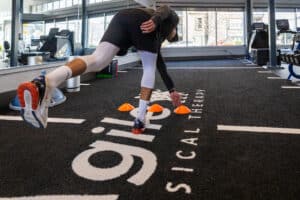
Golf After a Hip Replacement?
Golfing is a popular sport enjoyed by millions of people worldwide. However, for those who have undergone a total hip replacement, the prospect of returning to the golf course may seem daunting. The good news is that with proper care and attention, it is possible to get back to golfing after a total hip replacement. In this article, we'll provide tips and advice for safe and enjoyable golfing after hip replacement surgery, based on recent studies in the Journal of Orthopaedic & Sports Physical Therapy.
Benefits of Golfing after Hip Replacement Surgery
Golfing is a low-impact sport that can be beneficial for people who have undergone hip replacement surgery. Golfing helps improve cardiovascular health, build strength and endurance, and maintain flexibility. Moreover, golfing is a great way to stay active and socialize with friends and family.
Precautions for Golfing After Hip Replacement Surgery
Before getting back to golfing, it's important to get clearance from your surgeon or physical therapist. We often see patients after hip replacement here at Agile Physical therapy. The timing of returning to golfing can vary depending on the individual and the type of hip replacement surgery performed.
Tips and precautions to keep in mind:
- Start slow: Begin with short sessions and gradually increase the length of your golfing sessions. Don't try to play a full round of golf right away.
- Choose the right equipment: Use golf clubs with graphite shafts to reduce the impact on your hip joint. Consider using a cart instead of walking the course, especially in the early stages of recovery.
- Warm up: Before you begin playing, warm up with some gentle stretching and exercises recommended by your physical therapist.
- Use good technique: Practice good swing technique and avoid twisting your hip joint. Take a wider stance and avoid excessive weight shift to one side.
- Rest as needed: Take breaks as needed and listen to your body. If you experience pain or discomfort, stop playing immediately and rest.
- Stay hydrated: Drink plenty of water before and during your game to avoid dehydration.

Conclusion
In conclusion, golfing after a total hip replacement is possible with proper precautions and care. By starting slowly, using the right equipment, warming up properly, using good technique, taking breaks as needed, and staying hydrated, you can get back to the game you love. As always, consult with your surgeon or physical therapist before returning to golfing or any other physical activity.
About the Golf Team Lead:

Johnson is the head of the Agile Golf Program and a golf enthusiast and looks forward to implementing his Titliest Performance Institute training with his golf patients. Johnson holds a Doctorate in Physical Therapy from the University of Connecticut. He also earned a Bachelor of Science in Athletic Training and Sports Medicine from Quinnipiac University. During his program, he conducted academic research and has published in national physical therapy journals including the Journal of Isokinetics and Exercise Science and the Journal of Physical Therapy Science.
Johnson is originally from the East Coast. He has over six years of dedicated outpatient orthopedic physical therapy experience, working at Harvard Vanguard Medical Associates in Boston, Massachusetts. He also has experience in private practice, home health care, and collegiate sports. He is dedicated to furthering his education and regularly attends nationwide courses and conferences on orthopedics, spine care, manual therapy, and blood flow restriction training.
Johnson initially experienced physical therapy as a patient when recovering from an ACL tear in his knee. He is passionate about physical medicine and the process of restoring function. He has advanced experience in manual therapy and progressive resistance exercise.
Johnson is excited to explore California with his wife. In his free time, he loves to read non-fiction, cook Italian and Vietnamese food, and weight train. Johnson also enjoys working with Spanish and Mandarin Chinese-speaking patients.
Johnson Chu Certifications & Specialities:
- PT – Physical Therapist
- DPT – Doctor of Physical Therapy
- TPI- Titleist Level 1 & 2 Certification
- SFMA- Selective Functional Movement Assessment
